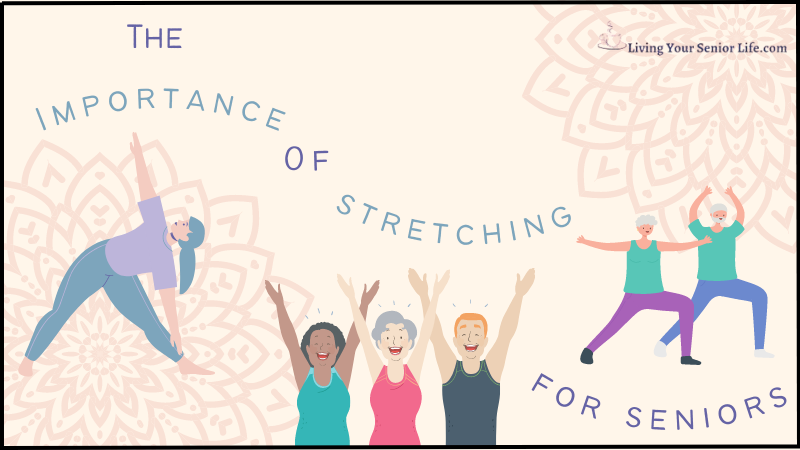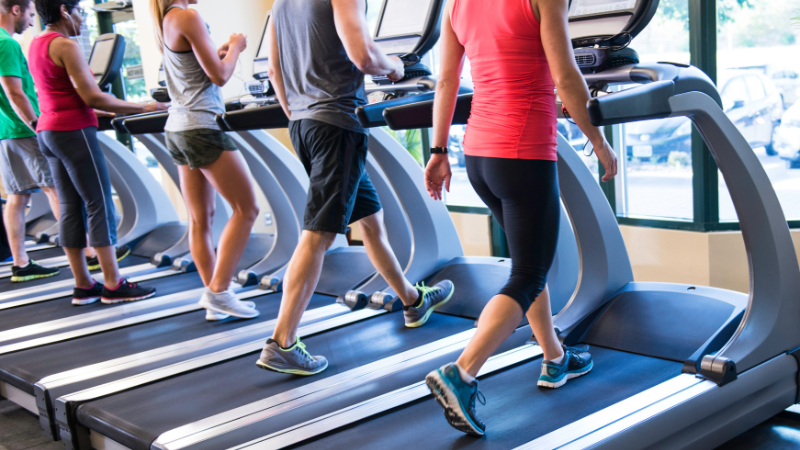**Always consult your physician or other healthcare provider before changing your diet or starting an exercise program.
As you age, maintaining flexibility and mobility becomes increasingly important. Regular stretching exercises can play a crucial role in helping seniors stay active, prevent injuries, and improve overall well-being. In this article, we delve into the importance of stretching for seniors, providing practical tips and insights to help you embrace a more flexible and active lifestyle.
We’ll explore different types of stretching exercises, discuss how to safely incorporate them into your daily routine, and address common questions and concerns you may have about stretching in your golden years. Whether you’re a senior looking to enhance your flexibility, a caregiver seeking effective exercises for your loved one, or simply someone interested in the benefits of stretching for seniors, this article is for you. Let’s embark on this journey towards improved flexibility and mobility, and discover how stretching can contribute to a healthier, more active senior life.
Key Takeaways
- Regular stretching exercises can help seniors stay active, prevent injuries, and improve overall well-being.
- Different types of stretching exercises can be incorporated into your daily routine to enhance flexibility.
- Safety precautions should be taken to ensure proper stretching technique and minimize the risk of injury.
Video: The Importance of Stretching for Seniors
Understanding the Importance of Stretching
Maintaining an active lifestyle is vital for seniors, and stretching exercises are a cornerstone of physical health as you age. Integrating flexibility exercises into your daily routine can lead to improved muscle strength, enhanced blood flow, and a reduction in risk of injury, especially in the lower back. Techniques such as dynamic stretching and static stretching target major muscle groups, promoting a full range of motion and aiding in the relief of tight muscles and stiff joints, common issues during old age.
Understanding the health benefits of a regular stretching routine goes beyond just physical well-being, encompassing mental health improvements as well. Tailoring activities to fit your needs, whether it’s through tai chi, resistance training, or simple daily stretches, can result in improved balance and coordination. This can significantly reduce the risk of falling—a major concern among older people. Engaging in varied forms of exercise ensures not only the maintenance of strength but also fosters a greater quality of life through increased mobility and engagement in everyday activities.
Static Stretching – Holding-Stretch Methodology
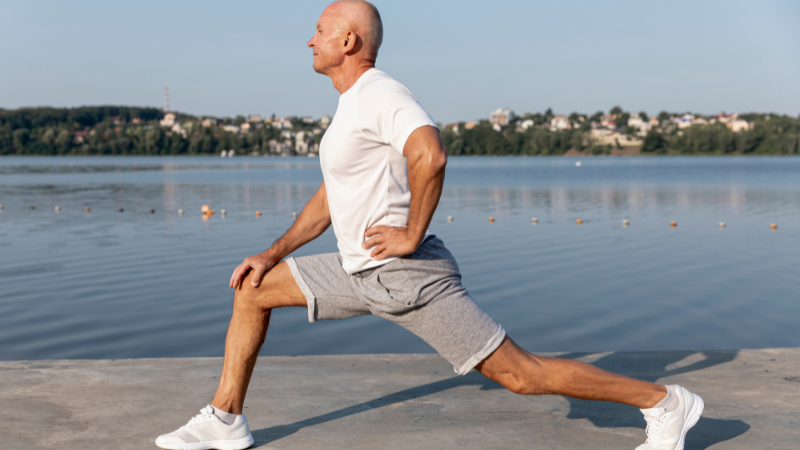
Static stretching is an effective and safe method for improving flexibility and to enhance muscle length and reduce stiffness. This type of stretching involves holding a position for a certain period to elongate and stretch the targeted muscle groups.
To perform static stretches, choose a specific muscle group to target, such as the hamstrings or shoulders. Gently stretch the muscle to a point of mild tension and hold the position for 15 to 30 seconds. Breathe deeply and relax into the stretch, avoiding bouncing or jerking movements as they can lead to injury. Repeat the stretch on both sides of the body.
This calm approach to stretching can be integrated into your daily routine with minimal risk of injury and is a great way to maintain the flexibility and health of connective tissues.
| Muscle Group | Stretch | Hold Time |
|---|---|---|
| Hamstrings | Seated Forward Bend | 15-30s |
| Shoulders | Cross-Body Arm Stretch | 15-30s |
| Lower Back | Knee-to-Chest Stretch | 15-30s |
Dynamic Stretching – Motion Based Stretching
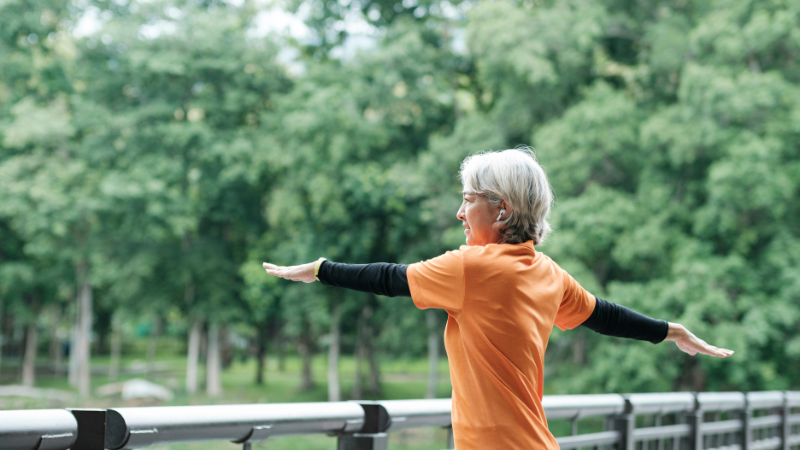
Incorporate motion-based exercises, also known as dynamic stretching, to prepare your muscles for daily activities and promote a full range of motion. These activities warm up your muscles, enhancing blood flow and preparing you for more vigorous physical activity. Examples include arm swings and gentle torso twists that can help in maintaining muscle strength and reducing muscle tension.
| Activity | Description | Benefits |
|---|---|---|
| Arm Circles | Rotate arms in a controlled manner | Increases shoulder joint flexibility |
| Leg Swings | Swing legs to mimic walking or kicking | Loosens hip flexors and improves balance |
Yoga and Tai Chi for Seniors – Eastern Practices
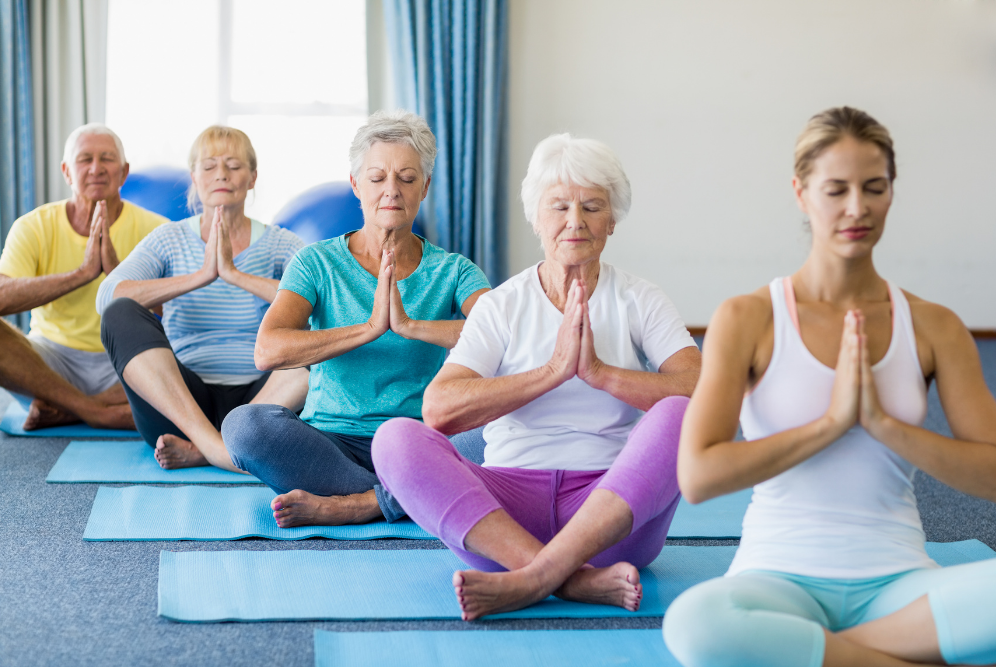
Yoga and Tai Chi offer a complete exercise experience, blending strength training, stretching, and mindfulness for healthy aging. These gentle forms of exercise can be adapted to suit various levels and support the alleviation of ailments such as lower back pain and joint pain. By participating in classes tailored to older adults, you can enjoy the health benefits of a more agile body and a fortified mind.
| Practice | Target Area | Mental Benefit |
|---|---|---|
| Yoga | Entire Body | Enhances mental health and relaxation |
| Tai Chi | Major muscle groups | Improves mindfulness and focus |
Incorporating Stretching into Your Daily Routine
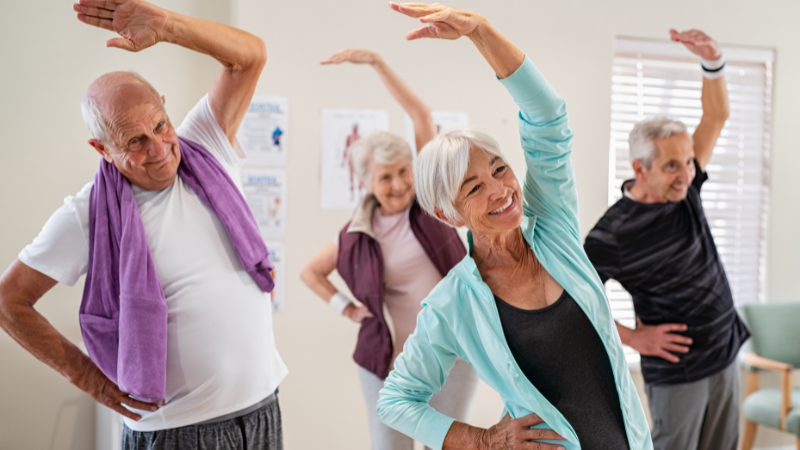
Building Your Personal Flexibility Plan
Developing a stretching regimen is crucial for healthy aging. Initiate brief sessions, increasing their length over time. Seamlessly blend stretching exercises into your daily routine, such as during quick breaks from sitting or after warm-up activities like light walking. It’s crucial to avoid muscle tension by stretching within your comfort zone.
Warm-Up Exercises Before Stretching
Before diving into stretching exercises, it’s crucial to warm up your muscles to prevent injuries. Initiating a stretching regimen after a period of 5 – 10 minutes of light aerobic exercise such as biking or brisk walking prepares the muscles and decreases the risk of injury. Additionally, perform warm-up exercises that specifically target the muscles you’ll be stretching. This can include resistance training, balance exercises, or even some light stretching.
Stretching at Home
You don’t need fancy equipment or a gym membership to stretch effectively. Create a comfortable space at home where you can perform your stretching routine. Use a yoga mat or a soft surface to protect your joints. Here are a few simple stretching routines you can incorporate into different times of the day:
| Time of Day | Stretching Activity | Objectives |
|---|---|---|
| Morning | Gentle, full-body dynamic stretches | Activate muscles, enhance circulation |
| Mid-Day | Short static stretches for neck, shoulders, arms | Relieve muscle stiffness, improve posture |
| Evening | Relaxing stretches, deep breathing exercises | Promote restful sleep, prepare muscles for recovery |
Stretching In Group Settings
Joining a group for regular bouts of stretching can be rewarding, particularly for older adults seeking social interaction and focused strength training. Community classes often facilitate flexibility exercises suitable for those with limited mobility or conditions like spinal stenosis. Online classes can replicate this experience at home.
Consulting with a Healthcare Professional

Before starting any new exercise routine, it’s important to consult with a healthcare professional, especially if you have pre-existing health conditions or concerns. Your doctor can provide valuable guidance tailored to your specific needs and limitations. They can recommend appropriate exercises, modify movements if necessary, and address any concerns you may have. Consulting with your doctor can help you prevent pain, falls, and injuries.
Safety Tips for Stretching
Stretching can enhance flexibility, diminish muscle stiffness, and contribute to injury prevention. While engaging in flexibility exercises, remember to gently warm up beforehand to increase blood flow and prepare your muscles. To ensure a safe and effective stretching practice, keep the following tips in mind:
Proper Form and Technique:
Pay attention to your body’s alignment and use proper form while performing stretches. Maintain a relaxed posture, engage the appropriate muscles, and avoid straining or overexerting yourself. If you’re unsure about the correct technique, seek guidance from a qualified instructor or physical therapist. Proper form can help you avoid strains, arthritis, and back pain.
Listening to Your Body and Avoiding Pain:
Stretching should provide a gentle pulling sensation, but it should never be painful. Listen to your body’s signals and avoid pushing beyond your comfort zone. If you experience any sharp or intense pain, stop the stretch immediately. Discomfort or mild muscle soreness is normal, but sharp pain can indicate an injury or overstretching. Overstretching can cause health concerns and discomfort.
Using Aids or Modifications if Needed:
If you have limited mobility or specific physical limitations, there are numerous aids and modifications available to assist you in your stretching routine. Use props like yoga blocks, straps, or chairs to support your body and modify the stretches according to your abilities. These modifications can help you maintain proper form and achieve a safe stretch. Using aids or modifications can help you reduce falls and prevent injuries.
By following these tips, you can ensure a safe and effective stretching routine that can help you improve flexibility, reduce muscle soreness, and prevent injuries.
FAQs
In this FAQ section, we’ll address some common questions related to stretching for seniors. Whether you’re just getting started with stretching or looking for clarification on specific aspects, these answers will provide valuable insights to help you on your fitness journey.
Is it safe for seniors to start stretching if they haven’t been active before?
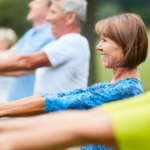
Starting a stretching routine is generally safe for seniors, even if they haven’t been active before. However, it’s important to start slowly and gradually increase the intensity and duration of your stretches.
It’s also recommended to consult with your healthcare professional before beginning any exercise routine, especially if you have any concerns or pre-existing health conditions. They can provide guidance based on your specific needs and limitations.
How often should seniors stretch to maintain flexibility?

To maintain flexibility, seniors should aim to stretch at least 2-3 times per week. However, if you have specific goals or health conditions, it’s best to follow the recommendations provided by your healthcare professional or physical therapist. Consistency is key, so try to incorporate stretching into your daily routine in a way that works best for you.
Remember to listen to your body and avoid overstretching or pushing beyond your comfort zone.
Can stretching help with joint pain and arthritis?
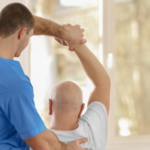
Stretching exercises can help alleviate joint pain and stiffness associated with arthritis. Gentle stretches can help improve joint mobility, increase blood flow, and reduce muscle tension around the joints. It’s important to choose stretches that target the specific joints affected by arthritis and to perform them with the proper form and technique.
However, it’s always advisable to consult with your healthcare professional or a physical therapist to determine the most suitable stretches for your condition. They can provide personalized advice based on your individual circumstances.
Remember, while the answers provided here offer general guidance, it’s important to consult with your healthcare professional for personalized advice based on your individual circumstances.
Conclusion
With the right approach to stretching exercises, you’ll notice an elevation in quality of life and well-being. Daily routines enriched with flexibility exercises are key to healthy aging, as maintaining flexibility supports your day-to-day life.
- Dynamic stretching can increase your blood flow, preparing the body for further physical activity.
- Static stretches target major muscle groups that may stiffen due to old age, such as the lower back and hip flexors.
Considering the health benefits of stretching, engage in activities like tai chi or a session guided by a physical therapist to ensure safe practice. Incorporating daily stretches into your life leads to improved muscle strength and joint flexibility, reducing the risk of falling and joint pain.
Remember to take deep breaths to increase blood circulation and always be gentle to avoid muscle tension. Commit to a regular stretching routine for a greater quality of life, and to help alleviate lower back pain and poor posture.
Are there any stretches you find particularly beneficial? Please comment below.
